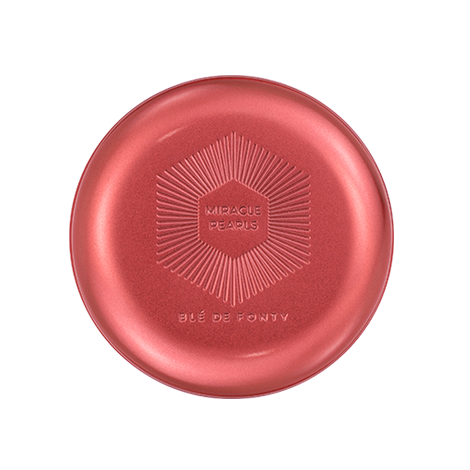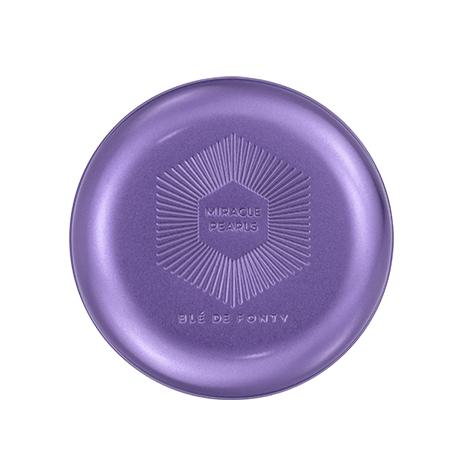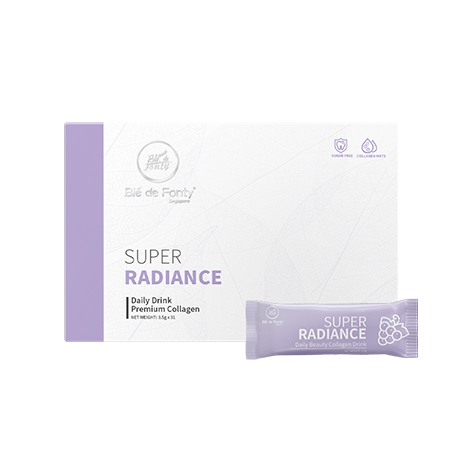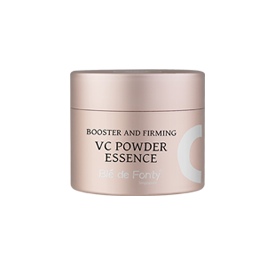What Makes a Deep Moisture Body Lotion Truly Hydrating
Introduction
The dialogue surrounding skincare has changed. It's no longer about surface-level glow or fleeting softness. The greater concern now—particularly in regions of fluctuating humidity and skin prone to moisture loss—is long-lasting hydration that penetrates and regenerates from within. At its center is the question few directly ask: what is it that makes a deep moisture body lotion truly hydrating?
Few brands promise, and fewer formulas reconcile with skin physiology in a manner that rejuvenates barrier function, improves water retention, and feeds cellular balance. Of these, products such as the CPES deep moisturizing lotion are notable not just for what they contain but for how they respond when placed in contact with dry or compromised skin layers. The sensation of hydration is not solely about texture. It is a matter of the biochemical compatibility of actives with the epidermis and how long they can function after application.

When hydration is ineffective, skin begins to show signs of surface dullness, tightness, premature lines, and inconsistent tone. But when hydration is authentic—when a lotion is designed with structural intention—skin not only looks better, it becomes stronger. This article takes apart the criteria that distinguish a true deep moisture body lotion from ordinary emollients and cosmetic placeholders. It explores the role of advanced humectants, lipid reinforcers, and smart-release emulsifiers, and how modern skin science has redefined what hydration should mean today.
The Physiology of Dry Skin and Its Repair Needs
Dry skin is not a state of dehydration. Rather, it is more a dysfunction in barrier ability, with TEWL (Transepidermal Water Loss) rising. Environmental stress, aging, and scrubbing cleansers can drain the endogenous lipid matrix of the skin, rendering it unable to retain water as it passes through. To be effective, a treatment for dry skin must reform the barrier that keeps water in.
A good, deep moisture body lotion restores surface moisture with hygroscopic ingredients such as glycerin, urea, sodium PCA, or hyaluronic acid. It restores skin structure with ceramides, cholesterol, and essential fatty acids. Moisturizing is not possible without these.
These scientific needs are central to how products like the CPES deep moisturizing lotion have positioned themselves, not as cosmetic coverups but as reparative treatments that work at cellular thresholds. Skin hydration is not about surface dew. It is about structural renewal.
Ingredient Architecture That Matters

Most lotions feel nice when you put them on. But most don't stay long—they're gone in under an hour. What makes a difference isn't just how many ingredients are packed inside, but how they're built to work together, and how well they match with what the skin needs.
The best deep moisture body lotions don't rely on numbers; they rely on smart ingredients that do more than one job. Things like panthenol (that's pro-vitamin B5), niacinamide (vitamin B3), and saccharide isomerate—they bond with the skin's surface, especially keratin, to stop water from leaking out. These aren't ingredients that sit on top and vanish. They form a kind of light layer, almost like a second skin. But not the heavy kind—it lets your skin breathe and still keeps your natural moisture balance steady. That's what makes the hydration stay—not just hours, but all day.
Formulas also need lamellar emulsions—structures that mimic the skin's lipid layers. These allow the lotion to integrate seamlessly and deliver ingredients in a controlled manner over time. It is this science that distinguishes products like the Beauty Balm Cream, which deploy moisture along with anti-inflammatory agents, making it ideal not just for hydration, but for irritation-prone conditions.
Sensory Hydration vs Structural Hydration
There is a distinction between lotions that feel hydrating and those that are hydrating. The former tend to rely heavily on silicones and petrolatum derivatives, which give skin a falsely smooth texture. They are not helpful in moisture retention at all.
A rich moisturizer for dry skin does not merely stay on the surface. It replenishes by gradually drawing moisture back into the surface of the skin and retaining it. When formulated correctly, a lotion should not only be smooth to the touch, but rather it should still make the skin feel soft, comfortable, and supple long after the application itself, even in environments where the air is dry, in air-conditioned rooms, or common contact with clothing and surroundings.
That's where something like the CPES deep moisturizing lotion makes its difference. It doesn't interfere with what the skin normally attempts to do. Rather, it adds on, enhancing the repair work of the skin without locking it up. As a result of that, the skin retains its bounce longer, doesn't crack easily, and remains calm even when dryness otherwise leads to irritation or small inflammation beneath the surface.
Hydration for Different Climates and Skin Types

Singapore's tropical humidity might suggest that skin is less likely to dry out, but the opposite is often true. Air-conditioned indoor environments, rapid shifts between indoor and outdoor temperatures, and high urban pollution levels lead to what dermatologists call evaporative stress on skin.
This is why a deep moisture body lotion in Singapore must be adapted not only for hydration but for climate resilience. It should have non-comedogenic yet occlusive properties that hold moisture without congesting pores. Lightweight emulsions that perform heavy-duty hydration—such as the Beauty Balm Cream—serve both oily and dry skin types without causing imbalance.
Moreover, products must accommodate ethnic skin variations. Melanin-rich skin appears more moist, but it is more prone to skin water loss. Deep moisturizers must therefore provide hydration that respects biochemical nuance, not just visual appeal.
The Role of Consistency and pH Balance
Even the most potent hydration formula cannot deliver results if the product's pH disrupts the skin barrier. Skin functions optimally in a slightly acidic environment, between 4.7 and 5.5 pH. A deep moisturizer for dry skin must be formulated within this range to ensure that enzymatic activity and microbiome equilibrium are maintained.
Texture consistency also affects efficacy. A lotion that is too thick may fail to absorb fully, leaving residue; one that is too thin may evaporate quickly. Ideal deep moisture formulas use thickeners like xanthan gum and carbomers sparingly and combine them with lipophilic agents to create textures that spread evenly and absorb progressively.
Hydration Beyond Water Content
Hydration isn't just about how much water sits inside a lotion, because that alone won't do much. What matters is how much water the skin can hold on its own. That's where the new generation of smart hydrators comes in. They don't only rely on ingredients that feel good on touch but also use film-formers that stay on the skin and time-release humectants that slowly keep feeding the skin with moisture. Lotions like the CPES deep moisturizing lotion often work through dual-phase systems, which means while the outer layer gives a fast softening feel, the deeper part keeps working in the background, releasing moisture for hours without needing to reapply again and again.
Some of the better body lotions today also use plant-based extracts that help reduce skin stress. Ingredients like licorice root, centella asiatica, and green tea don't just sound fancy. These are known to calm the skin, reduce irritation, and bring down the chain reactions in the skin that normally follow dryness or barrier damage. This helps skin remain more stable, and when the skin is less inflamed, it holds onto moisture far better.
Dermatological Testing and Long-Term Efficacy
A body lotion for dry skin doesn't become trustworthy just because it feels nice. To be considered effective, it has to go through tests—not only on one skin type or one group, but across different people with different ages, sensitivities, and even weather conditions. It's one thing for a product to get a few good reviews, but it's another to prove through science that it reduces water loss, improves softness deep within the layers, and maintains elasticity over time. That's where proper dermatological trials come in.
The better-performing deep moisture body lotions don't rely on just a 24-hour hydration test. Many of them undergo extended-use studies to check if they can maintain hydration for 48 hours or more. That kind of endurance matters, especially for people dealing with issues like eczema, skin flaking, or long-term dryness that doesn't improve with ordinary products. When something can help repair skin and hold water for that long, without reapplication, it begins to be seen not just as a cosmetic but as something therapeutic—something that supports healing.
Final Thoughts
A deep moisture body lotion that truly works today is no longer judged only by how silky it feels in the moment. That is not enough anymore. What sets it apart is how it behaves with the skin's biology. The product has to respect the skin's structure, support its barrier, and layer its active ingredients in a way that makes sense for real skin, not just for marketing labels.
This is what makes products like the CPES deep moisturizing lotion or Beauty Balm Cream stand out. These don't just coat the skin for surface-level shine, but rather try to work in sync with what the skin naturally needs, especially when it is stressed, dry, or recovering. They help create balance and rebuild moisture over time, not just for hours but possibly for days.
As people begin to understand ingredients better and demand more from their skincare, especially in tough climates or high-stress environments, body lotions must do more than hydrate. They must restore calm, rebuild strength, and help the skin remember how to retain water on its own. This is no longer a luxury. This is what smart, effective deep moisturizers for dry skin are expected to do now. And it is what good skin—especially sensitive, stressed, or aging skin—deserves.















